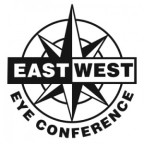by Mark Ridenour, OOA Consultant
Medicare Advantage Plans
Medicare Advantage (MA) plans are growing in popularity (from 26% of Ohio Medicare eligibles in 2008 to 36% in 2012), and if you are a participating provider you have become even more valuable to MA plans. Medicare pays private insurance companies a capitated amount to provide hospitalization, professional, and prescription drug benefits as MA products to those eligible for Medicare. This is an alternative for beneficiaries to taking traditional Medicare benefits from the federal government.
MA plans are approved for sales to beneficiaries by county. There are now 28 plans available in Ohio with 8 of those being Special Needs Plans (SNPs), specifically those in long-term institutions or dually eligible for both Medicaid and Medicare. MA payers include large insurers like United HealthCare, Anthem, Aetna, Kaiser and Humana and many local or regional carriers such as SummaCare, MediGold, and CareSource.
The Affordable Care Act (ACA) has modified the plan payment formulas to reward quality measures. Performance on these are represented by a 5 Star system which was originally designed to help consumers choose high quality plans, but now carries the greater weight of increased funding and more liberal enrollment parameters for the insurers. Of the current 37 metrics used to rate all MA plans, Glaucoma Testing and Diabetic Eye Exam are included. In addition, #22 is Fall Prevention where a vision exam is recommended, and others measure customer satisfaction (e.g., Getting Appointments and Care Quickly) which could include members’ perception of their Optometrist. This focus on quality Stars should increase your leverage with the plans and lead to outcome-based bonus payment and/or increased volumes to your practice.
If you find your practice is excluded from a Medicare Advantage product and the plan seems unwilling or unable to add you to their network, please take the following steps:
1. Contact the ophthalmologist(s) you generally refer patients in this MA plan to solicit their support for continuing to receive referrals.
2. Encourage your patient to contact the MA plan as a member to your practice be added.
3. Inform OOA.
Medicaid Managed Care
The Medicaid Managed Care Plans for all regions of Ohio starting July 1, 2013 are:
Buckeye
CareSource
Molina
Paramount
United HealthCare

 One tenth. 10%. It may not seem like a lot. Ohio volunteer doctors do one tenth of all the InfantSEE exams reported in the United States. In 2012, Ohio doctors reported 1,095 InfantSEE exams; a total of 11,451 InfantSEE exams were reported in the country. Throughout the eight-year history of InfantSEE, 97,267 InfantSEE exams were reported by Ohio ODs throughout America. Ohio ODs reported 9,520 InfantSEE exams, I assume Ohio will go over the 10,000 mark for InfantSEE exams in 2013; I also assume the 100,000 mark will be eclipsed in the United States.
One tenth. 10%. It may not seem like a lot. Ohio volunteer doctors do one tenth of all the InfantSEE exams reported in the United States. In 2012, Ohio doctors reported 1,095 InfantSEE exams; a total of 11,451 InfantSEE exams were reported in the country. Throughout the eight-year history of InfantSEE, 97,267 InfantSEE exams were reported by Ohio ODs throughout America. Ohio ODs reported 9,520 InfantSEE exams, I assume Ohio will go over the 10,000 mark for InfantSEE exams in 2013; I also assume the 100,000 mark will be eclipsed in the United States.


 Realeyes presented all four curricula – Sammy Safe-Eyes, Rhet & Tina, Vinny Vision, and What Your EYE-Q – to over 400 students at Fayetteville-Perry Local Schools (Brown County) May 28.
Realeyes presented all four curricula – Sammy Safe-Eyes, Rhet & Tina, Vinny Vision, and What Your EYE-Q – to over 400 students at Fayetteville-Perry Local Schools (Brown County) May 28.
 OOA Trustee Michael Earley, OD, PhD, has been awarded the 2013 American Optometric Association Educator of the Year. He is the Assistant Dean for Clinical Services at The Ohio State University College of Optometry.
OOA Trustee Michael Earley, OD, PhD, has been awarded the 2013 American Optometric Association Educator of the Year. He is the Assistant Dean for Clinical Services at The Ohio State University College of Optometry.